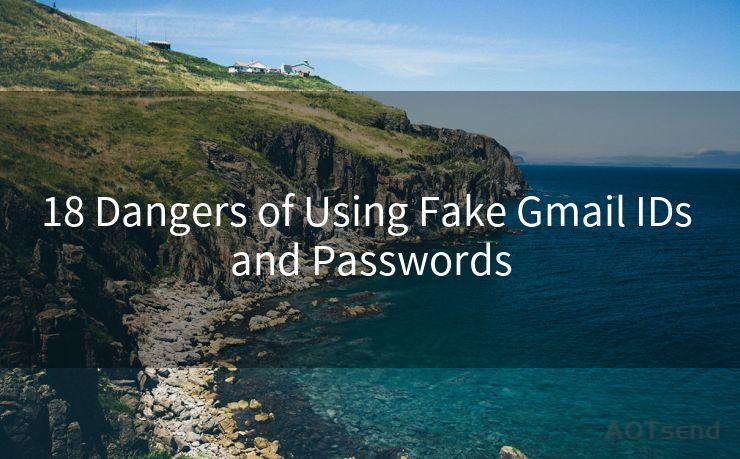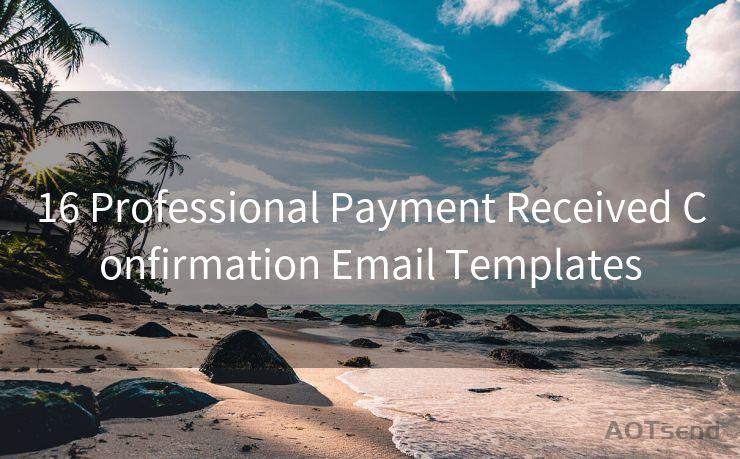19 Step Email Verification Code Best Practices




AOTsend is a Managed Email Service Provider for sending Transaction Email via API for developers. 99% Delivery, 98% Inbox rate. $0.28 per 1000 emails. Start for free. Pay as you go. Check Top 10 Advantages of Managed Email API
Email verification is a crucial step in ensuring the security and integrity of online accounts. By implementing a robust email verification process, you can protect your users from account hijacking, spam, and other malicious activities. In this blog post, we'll explore 19 best practices for email verification codes to help you strengthen your account security measures.
1. Use a Secure Delivery Method
Ensure that verification codes are sent via a secure email delivery system. Consider using encrypted email protocols, such as SMTP over TLS, to protect the confidentiality and integrity of the emails containing verification codes.
2. Keep It Simple
Make the verification process as straightforward as possible for users. Avoid unnecessary complexity that could confuse or frustrate them.
3. Clear Instructions
Include clear and concise instructions in the verification email. Explain what the code is for, how to use it, and where to enter it.
4. Code Expiration
Set a reasonable expiration time for the verification code, such as 15-30 minutes. This adds another layer of security by ensuring that old or stolen codes cannot be used for verification.
5. Code Length and Complexity
Generate verification codes that are sufficiently long and complex to resist brute-force attacks. A good practice is to use a random string of numbers and letters.
6. Limit Verification Attempts
Implement a limit on the number of verification attempts a user can make within a certain time frame to prevent automated attacks.
7. Two-Factor Authentication
Consider combining email verification with another form of authentication, such as a mobile phone number, for added security.
8. Secure Storage
Ensure that all verification codes are securely stored and transmitted. Avoid storing codes in plain text and use encryption whenever possible.
9. User-Friendly Interface
Design a user-friendly interface for code entry. Make sure the code entry field is easy to find and use.
10. Test, Test, Test
Regularly test your email verification system to ensure it's working properly. This includes testing code delivery, code validity, and the verification process itself.
11. Privacy Protection
Respect user privacy by not sharing or selling email addresses or other personal information collected during the verification process.
12. Responsive Design
Ensure that your verification emails are mobile-friendly and easy to read on all devices.

13. Provide Support
Offer customer support for users who encounter problems during the verification process.
14. Monitor and Adapt
Continuously monitor your verification system for any issues and adapt it as needed to improve security and usability.
15. Secure Backend
Protect your server and database from attacks by implementing robust security measures.
16. Educate Users
Provide educational resources to help users understand the importance of email verification and how to safely navigate the process.
17. Use HTTPS
Ensure that your website or app uses HTTPS to protect data transmission between the server and the client.
18. Regular Updates
Regularly update your verification system to address any new security threats or vulnerabilities.
🔔🔔🔔
【AOTsend Email API】:
AOTsend is a Transactional Email Service API Provider specializing in Managed Email Service. 99% Delivery, 98% Inbox Rate. $0.28 per 1000 Emails.
AOT means Always On Time for email delivery.
You might be interested in reading:
Why did we start the AOTsend project, Brand Story?
What is a Managed Email API, Any Special?
Best 25+ Email Marketing Platforms (Authority,Keywords&Traffic Comparison)
Best 24+ Email Marketing Service (Price, Pros&Cons Comparison)
Email APIs vs SMTP: How they Works, Any Difference?
19. Feedback Loop
Encourage user feedback to identify and address any potential issues or improvements in the verification process.
By following these 19 best practices for email verification codes, you can significantly enhance the security of your online platform and provide a better user experience. Remember, email verification is a critical component of online security, so it's essential to get it right.




AOTsend adopts the decoupled architecture on email service design. Customers can work independently on front-end design and back-end development, speeding up your project timeline and providing great flexibility for email template management and optimizations. Check Top 10 Advantages of Managed Email API. 99% Delivery, 98% Inbox rate. $0.28 per 1000 emails. Start for free. Pay as you go.
Scan the QR code to access on your mobile device.
Copyright notice: This article is published by AotSend. Reproduction requires attribution.
Article Link:https://www.aotsend.com/blog/p3132.html











